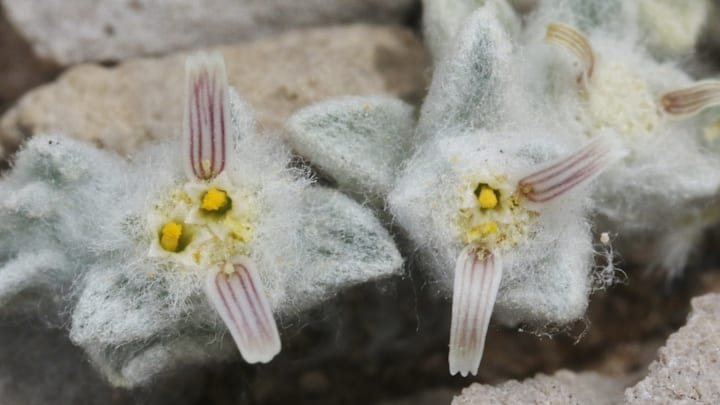According to the World Economic Forum, about 400,000 plant species have been named, but another 100,000 have yet to be discovered. Scientists have several new species to study, including a fuzzy plant that was recently found in Texas’s Big Bend National Park.
Park volunteer Deb Manley and supervisor Cathy Hoyt stumbled across the plant sprouting between rocks while exploring the park’s backcountry in March 2024. Its unique, furry appearance drew their attention because it looked unfamiliar. Manley took uploaded some photos she took to iNaturalist, a citizen science app, and told other staff members to see if someone recognized it. The discovery excited the botanist community. Manley and a few researchers didn’t take long to form a team to identify the plant.
Isaac Lichter Marck, a post-doctoral researcher at the California Academy of Sciences who joined the research, told NPR that they attempted to determine the plant’s closest relatives to understand how it should be classified. After using DNA sequencing and electron beams to compare the new plant to other similar species, scientists determined it didn’t perfectly match any genus. Not only is the fuzzy plant is a new species, but it belongs to new genus as well—a rare double-discovery.
Manley dubbed the plant the “woolly devil” (Ovicula biradiata) because of its furry appearance and horn-like petals. The plant was also found near Devil’s Den, a hiking area in Big Bend National Park. According to Smithsonian, the woolly devil’s scientific name derives from the Latin word Ovicula, which means “tiny sheep.” It’s a reference to the desert bighorn sheep roaming the park and the white fur covering the plant.
The name woolly devil is quite intimidating for a tiny plant. The largest reached 3 inches across, while the smallest was less than half an inch. So far, it has only been spotted in one section of the Chihuahuan Desert that overlaps Big Bend.
Scientists still have a lot of research to do on the woolly devil. You can find its full scientific description in the journal PhytoKeys.
Read More About the Environment:
